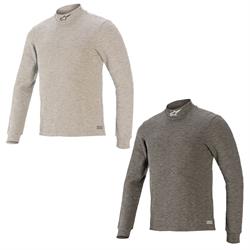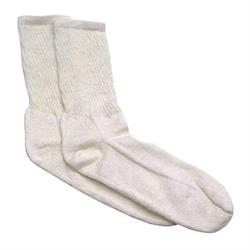How to Prepare for a Red Flag
Nobody wants to see the red flag at the racetrack. It means that there’s a problem and one of your fellow racers might be in trouble. It might also mean that you’re in trouble. At this year’s Knoxville Nationals, our own Race Product Manager Greg Nicol gave a short talk about what to do under red and how to be prepared for anything.
We sat down with Greg and asked him a few questions about what to do when the worst happens.
Q: What causes a red flag?
“Generally a red flag is where a car gets upside down, if multiple cars are involved in an accident, or if there’s a major incident like a fire or something like that.”
Q: What should you do if you’re on the track and see the red?
“To the drivers, that’s an instruction to stop the car immediately. Sometimes if a driver rolls through the crash area, they’ll be black flagged and not allowed to continue the race. A red flag is meant to stop the cars on the track as soon as it’s safe and for the safety crews to get to the incident safely and do what they need to do.”
It may seem obvious, but Greg emphasized that no positions can be gained under red.
“The field is frozen when the red flag comes out. Normally, it goes back to the running order under the last completed green flag lap. If you’re involved in the accident but are able to continue, then you go to the back of the field."
Q: How do you prepare to be part of the incident that brings out the red?
Greg says your preparedness for that situation starts long before you get upside down. First, don’t cheap out when it comes to your safety equipment. You’ve heard it a million times, but we can’t say it enough.
“Keep your uniform clean and have quality stuff. Many guys will buy an SFI-1 uniform. That’s not much more protection than a T-shirt. You’ll get about 6 seconds in a fire before you experience burns. An SFI-5 will be somewhere in the 10 second range, and if you put Nomex underwear underneath, you’re going to gain another 10-15 seconds. And, as you go up in uniform quality, the uniforms get lighter and the driver stays cooler, so he’s not sweating and exerting as much energy.”
“Also, I strongly encourage anybody who’s racing to put their uniform on, put their helmet on, gloves, shoes, just like they’re racing, and crawl in that car in the shop and see how fast they can get out of it. And do that multiple times, just like you’re driving the car; belts tight, steering wheel on, and get out of it quick. Do it on both sides. Think about different scenarios where “I’m in trouble, what do I do” so that it becomes natural, your first instinct. Even better, turn the lights out and do it in the dark."
More from Knoxville
Greg was joined by Jacob Brown from K1 RaceGear, Charlie Cutter from the Knoxville Raceway safety crew, and Jay Masur from the Med-Star team that does training with tracks like Knoxville, Huset's, and Jackson Speedway . They added a few great points about how to be prepared.
First, Jacob had a lot to say about how to properly care for a suit. He was quick to point out the importance of keeping a suit clean. Grease and oil are flammable and will compromise the suit’s ability to protect you in a fire. But you can’t just blast them through the laundry like a regular work shirt.
“Fire suits are fire resistant, but they’re not bulletproof. They’re actually very delicate.” So what does Jacob recommend? “Wash it on cold with no agitation. You don’t want to stress the suit out. Use a low-caustic laundry detergent; we recommend Woolite or a Molecule kit. Then hang dry it upside down and out of the sun. The sun will actually start taking away the fire-retardancy of FR cotton.”
Greg already recommended Nomex underwear. Jacob added that while the underwear will add to your overall TPP (Thermal Protective Performance), but it also closes gaps on your body.
“Fire and fuel and air will go anywhere it can go. So if you get where it comes down underneath, you’re going to catch on fire. It’s going to up your sleeves, up your legs, down your neck. Nomex adds a very necessary extra layer of protection.”
All of this comes at a cost. Good safety gear isn’t cheap. When asked about this, Jacob’s response was simple.
“If you get burned and spend a couple days in the hospital, that medical bill is going to be a lot more than what that $1500 suit is. Some people try to cut corners and safety is certainly not an area to cut corners. Guys will say ‘what’s the minimum I can get by with?’ If you’ve got that mindset, then you’re setting yourself up for failure.”
Charlie and Jay had a lot to say about what they do and what to expect if you are involved in a crash. First, Jay emphasized the importance of drivers paying attention and stopping when they see the red. "As much as we want to keep the drivers safe, we're not going to do them any good if we get run over by a car."
Once they get to the you, they're going to asses the severity of the situation. Jay says, "The first thing that I do is go up to him so he can see me, put my hand on the windshield or visor and say "Safety, are you ok?" and see if I get a verbal response." The rest of the crew is awaiting a thumbs-up to let them know that the driver is ok. "If the driver's not ok, then I'll call for another medic. I always try to look straight in on the driver" says Jay. "You don't want them to turn their head or turn their body until they've had a chance to self evaluate." It's also not uncommon for drivers be very combative when they come to and they will take a swing at the safety crew. "We don't take it personally."
According to Jay, there are two types of extrications, depending on whether or not the situation is life threatening. The Knoxville crew has both down to an art, and have the tools and training necessary to get it right. Also, they practice. "It takes a lot of practice. It's something your team has to work on constantly to make sure you're proficient."
Knoxville is famous for having a world-class safety crew, and Charlie and Jay are great examples of why that is. Does your track have the same commitment to safety? Just like your suit and the safety equipment on your car, you don't want to find out too late that it wasn't good enough.








